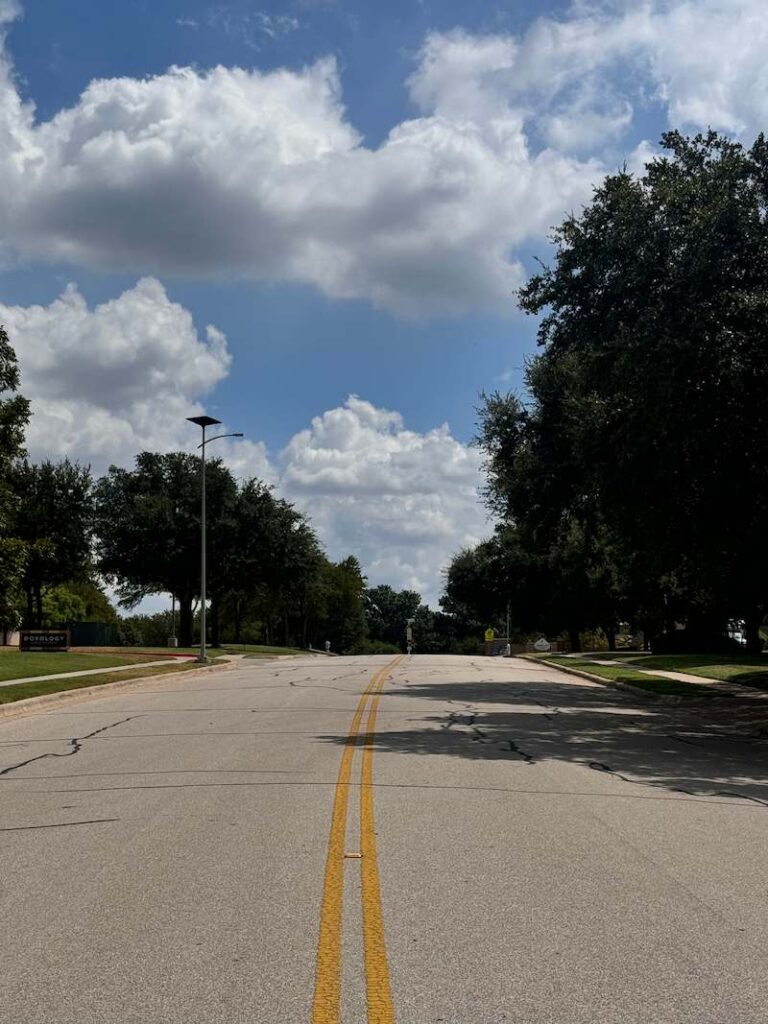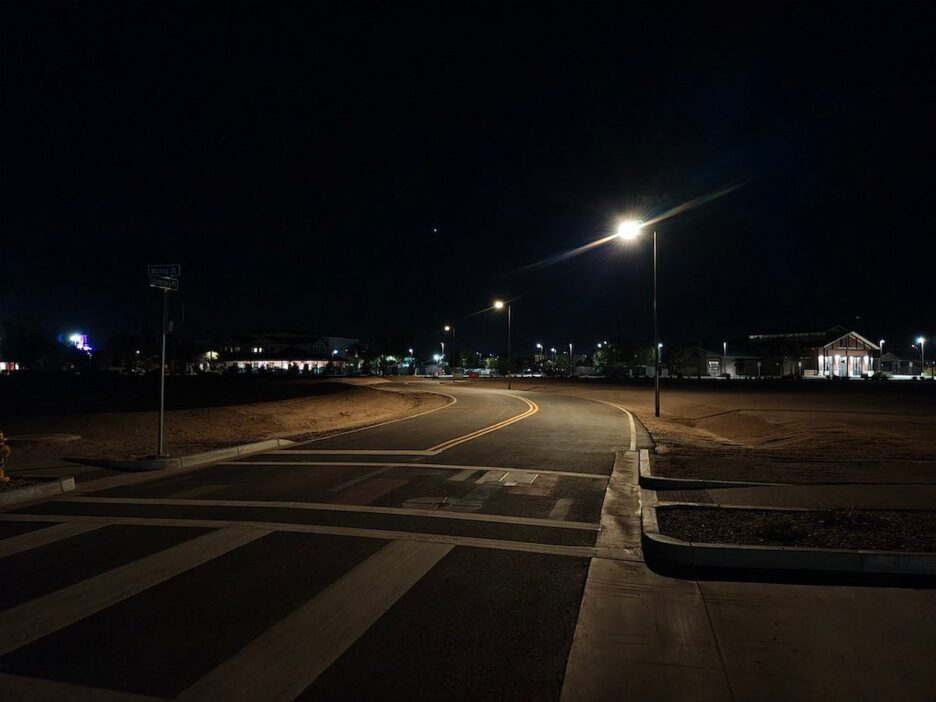In many Alabama counties, a drive home after dark means miles of unlit roads, hidden curves, and unseen hazards. Drivers navigate blind corners; school buses stop along poorly lit routes, and families travel long distances on roads with no safety infrastructure.
For rural communities, the lack of lighting isn’t just inconvenient; it is also dangerous. Higher crash rates, increased pedestrian risks, and slower emergency response times all point to one truth: unlit roads leave underserved counties at a disadvantage compared to their urban neighbours. Lighting rural roadways isn’t just about visibility; it’s about equity, safety, and access. With new solutions available, Alabama counties no longer have to choose between protecting residents and balancing budgets.
The Rural Safety Gap
Rural Alabama communities face a disproportionate burden when it comes to roadway safety. According to the National Highway Traffic Safety Administration (NHTSA), rural residents are three times more likely to die in roadway accidents than those in urban areas.
A major factor is the prevalence of long stretches of unlit county roads, where drivers encounter sharp curves, narrow bridges, or roadside pedestrians with little to no visibility. These risks grow worse in underserved areas where infrastructure dollars often bypass rural projects, leaving communities without the resources to make critical safety upgrades. Even when lighting projects are approved, traditional grid-tied systems are out of reach for most counties. Trenching, wiring, and utility coordination drive costs far beyond rural budgets, while ongoing energy bills and maintenance add long-term strain. The result: safety gaps that persist for years, leaving residents vulnerable.
Equity in Infrastructure
- Lighting is about equity as much as visibility. Rural residents shouldn’t face higher crash risks simply because the cost of extending grid power is out of reach. Every community deserves safe roadways after dark.
- Rural communities deserve the same protection as urban centers. Well-lit intersections, crosswalks, and roadways shouldn’t stop at city limits; Alabama’s small towns and counties need the same infrastructure to keep residents safe.
- Funding priorities are shifting in favour of underserved areas. Federal and state grant programs now place equity at the forefront, creating opportunities for rural counties to finally secure funding for critical lighting upgrades.
How SmartLights Close the Gap
Fonroche SmartLights eliminates the barriers that have long kept rural Alabama communities in the dark. With an off-grid design, there’s no need for trenching, wiring, or costly utility coordination, making projects faster and far more affordable. Each unit can be installed and fully operational in under an hour, allowing counties to complete roadway lighting projects in weeks instead of years.
Powered by Power 365™ energy management, SmartLights deliver guaranteed dusk-to-dawn illumination every night of the year, even during storms or extended cloudy weather. And with 10+ years of maintenance-free performance, they remove the burden of ongoing service, giving counties a long-term, reliable solution that doesn’t strain limited staff or budgets.
Impact Zones: Where SmartLights Make the Biggest Difference
Rural roadway lighting isn’t one-size-fits-all. Certain locations carry higher risks, and these are the places where Fonroche SmartLights have the most impact. For municipalities upgrading public facilities alongside rural roads, see our guide on solar parking lot lighting in Alabama for additional safety and cost‑saving strategies.
Rural school bus stops
- In many Alabama counties, children wait for buses along dark, rural roads before sunrise or after sunset. SmartLights provide consistent, off-grid illumination that protects students and reassures parents.
High-risk curves and bridges
- Sharp turns and narrow bridges are dangerous even in daylight; after dark, they become accident hotspots. Installing SmartLights at these points improves visibility and reduces crash risks for local drivers.
Community connectors
- Small towns across rural Alabama often rely on two-lane roads to link communities together. SmartLights make these connectors safer after dark, supporting both local travel and regional commerce. Many of these same safety benefits extend to parks and walking routes. Explore how solar trail and pathway lighting in Alabama improves access and recreation in rural communities.
Intersections and crossings
- Rural intersections are among the most dangerous parts of the road network due to low visibility and higher speeds. Well-placed SmartLights illuminate these decision points, giving drivers more time to react and reduce collisions.

Real Funding Pathways
For rural counties, the greatest challenge in addressing roadway safety is often finding the money to make projects happen. Fortunately, several federal and state programs are now prioritizing equity and safety in underserved areas, creating new opportunities for solar lighting. The Rural Surface Transportation Grant Program provides direct funding for counties to improve roadway safety and connectivity, while the Rebuilding American Infrastructure with Sustainability and Equity (RAISE) program supports projects that advance equity and community access, making rural roadway lighting a strong fit. Alabama counties can also leverage the Community Development Block Grant (CDBG) to fund local safety improvements such as bus stops, intersections, and community connectors. In addition, the Highway Safety Improvement Program (HSIP) offers resources to reduce roadway fatalities and serious injuries, with lighting upgrades eligible in high-risk rural zones like curves, bridges, and intersections. Together, these pathways make it possible for rural leaders to close long-standing safety gaps without straining local budgets.
Quick FAQ: Rural Roadway Lighting
How can we add lighting on roads that don’t have access to the grid?
SmartLights are completely off-grid, requiring no trenching or power connection. They can be installed anywhere, even in the most remote rural stretches.
Will the lights stay on during storms, cloudy weeks, or Alabama’s humid summers?
Yes. With Power 365™ energy storage, SmartLights provide dusk-to-dawn lighting 365 nights a year and are built to withstand Alabama’s weather extremes.
Do SmartLights meet roadway safety and visibility standards?
Absolutely. They comply with IES illumination standards and can be designed to meet DOT safety requirements for intersections, crosswalks, and roadways.
What if our county can’t fund a full project at all times?
SmartLights are modular and scalable, so installations can be phased over multiple fiscal years as funding becomes available, without dependency on existing infrastructure.
Are there grants available specifically for rural roadway safety?
Yes. Programs such as the Rural Surface Transportation Grant Program, RAISE, CDBG, and HSIP all prioritise underserved areas, making rural roadway lighting projects strong candidates for funding.
Closing Vision: Lighting Beyond the City Limits
Lighting shouldn’t stop where the city ends. For too long, Alabama’s rural counties have been left in the dark, facing higher crash rates, longer emergency response times, and limited access to safe infrastructure. With Fonroche SmartLights, every community can close its safety gap and provide residents with the security and equity they deserve.
By choosing solar-powered roadway lighting, counties gain a solution that is fast to install, maintenance-free for more than a decade, and fully eligible for state and federal funding. The path to safer, more connected rural roads has never been clearer.

